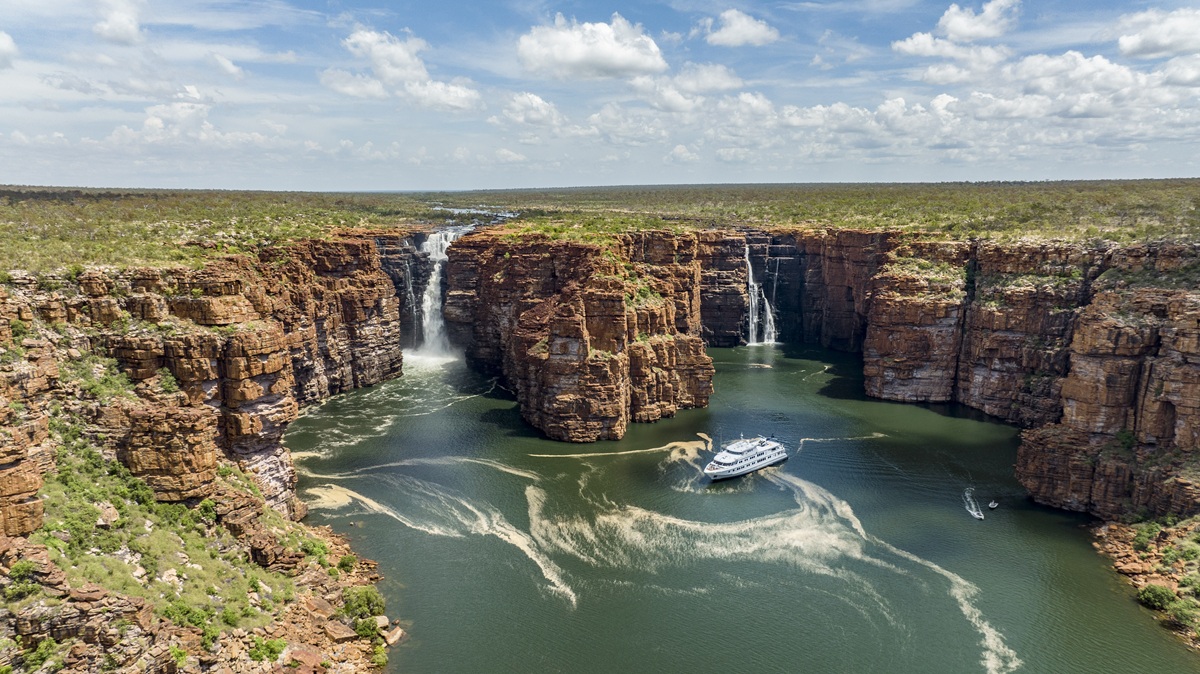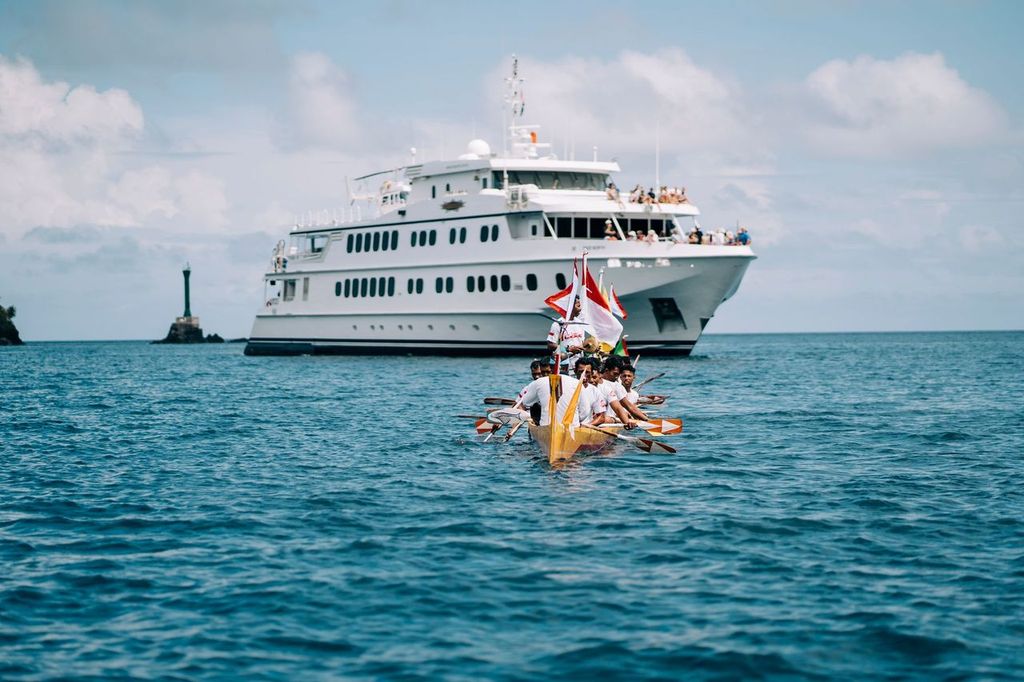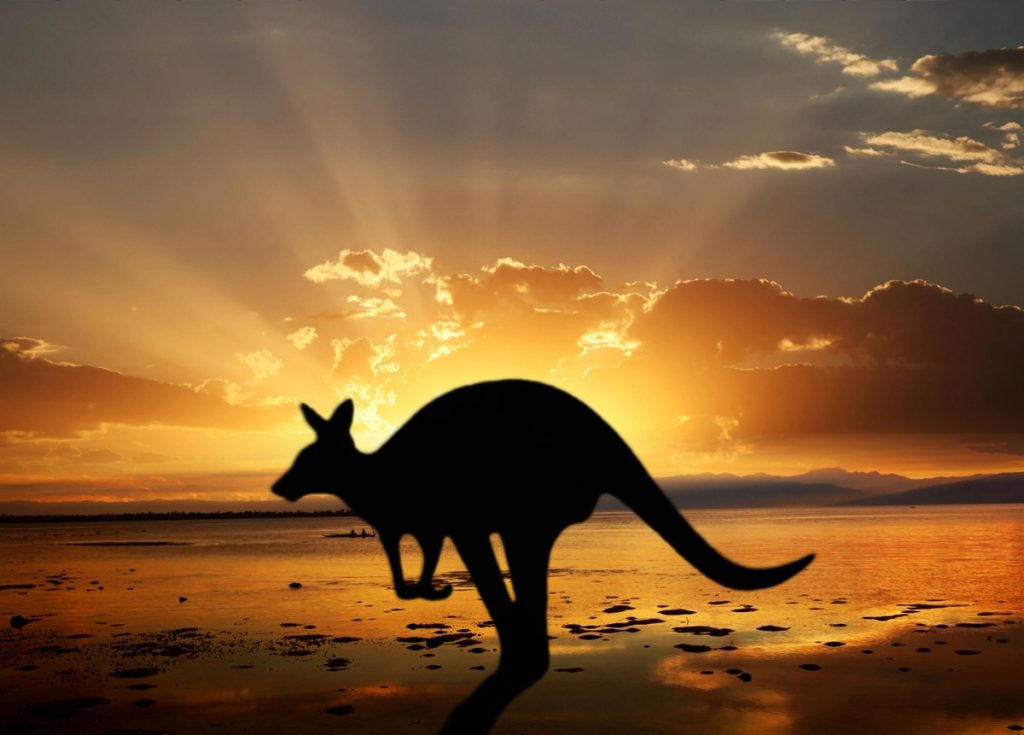Imagine a place where towering waterfalls plunge into cerulean waters, humpback whales breach against red rock cliffs, and vibrant coral reefs teem with life. Welcome to the Great Kimberley Marine Park—one of Australia’s most remote and breathtaking marine sanctuaries.
This vast wilderness is a refuge for rare and endangered marine life, a place where powerful tides shape the land and ancient Indigenous cultures hold deep connections to the sea. Few have the chance to explore its untouched beauty, but those who do are rewarded with sights and experiences found nowhere else on Earth.
A marine park like no other
The Great Kimberley Marine Park is one of Australia’s largest and most ecologically important marine protected areas. Spanning three million hectares along the Kimberley coastline, this vast marine park safeguards some of the most untouched and biodiverse waters in the world.
Rather than a single marine park, the Great Kimberley Marine Park is a network of four interconnected parks, each protecting different parts of this unique marine environment:
- North Kimberley Marine Park
- Lalang-garram / Camden Sound Marine Park
- Lalang-garram / Horizontal Falls Marine Park
- North Lalang-garram Marine Park
The park’s coral reefs, mangrove forests, deep-sea canyons, and seagrass meadows provide critical habitats for rare and endangered marine life. Some of the world’s largest tides shape the coastline, carving hidden inlets and feeding vibrant marine ecosystems.
To ensure the Kimberley’s marine environment remains protected, the park is divided into multiple conservation zones. National Park Zones offer the highest level of protection, while Habitat Protection and Multiple Use Zones allow for sustainable tourism, eco-friendly fishing, and cultural practices. This approach preserves the Kimberley’s natural beauty while allowing visitors to experience its wonders responsibly.
Meet (just a few of) the residents of the Kimberley sea!
Humpback whales
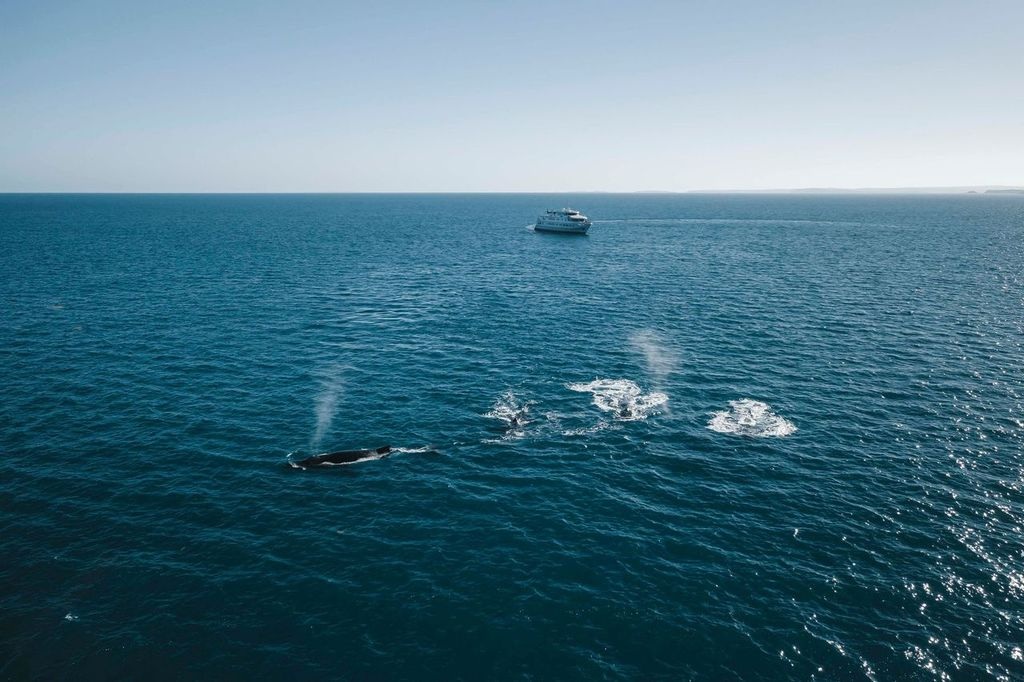
Every year, around 30,000 humpback whales (Megaptera novaeangliae) migrate from Antarctica to the warm, sheltered waters of the Kimberley to breed and give birth. This makes the park one of the world’s largest whale nurseries. The breaching, tail-slapping, and spy-hopping of these giants is a spectacular sight, particularly between June and October.
Australian Snubfin Dolphins
The Australian snubfin dolphin (Orcaella heinsohni) is one of the rarest dolphins in the world and is found along the Kimberley coastline. These small, shy dolphins prefer shallow estuaries and tidal creeks, making them a unique and special sight for visitors exploring the region’s inlets.
Indo-Pacific Humpback Dolphins
Another rare species, the Indo-Pacific humpback dolphin (Sousa chinensis), is commonly seen in Kimberley’s coastal waters. Unlike other dolphins, these have a distinctive hump-shaped dorsal fin and are often spotted near river mouths and mangrove forests.
Spotted Bottlenose Dolphins
The spotted bottlenose dolphin (Tursiops aduncus) thrives in the clear, open waters of the Kimberley. These highly intelligent and social creatures are frequently seen riding the bow waves of boats, providing unforgettable wildlife encounters.
Dugongs
The Kimberley’s seagrass meadows provide a crucial feeding ground for the dugong (Dugong dugon), a close relative of the manatee. Sometimes called “sea cows”, these slow-moving marine mammals spend their days grazing on seagrass, playing a vital role in maintaining the health of the marine ecosystem.
Sea turtles
The Great Kimberley Marine Park is home to six of the world’s seven sea turtle species, including:
- Green turtle (Chelonia mydas)
- Hawksbill turtle (Eretmochelys imbricata)
- Flatback turtle (Natator depressus)
- Loggerhead turtle (Caretta caretta)
- Olive ridley turtle (Lepidochelys olivacea)
- Leatherback turtle (Dermochelys coriacea)
Each year, female turtles return to the remote beaches of the Kimberley to lay their eggs, continuing an ancient cycle that has existed for millions of years.
Seabirds
The park’s islands and coastal wetlands are vital for migratory seabirds, including:
- Eastern curlew (Numenius madagascariensis)
- Curlew sandpiper (Calidris ferruginea)
- Lesser frigatebird (Fregata ariel)
Adele Island and Roebuck Bay are particularly important as breeding and foraging grounds for these migratory birds.
Indigenous connection to the sea
The Great Kimberley Marine Park is more than just a marine sanctuary.
For the Wunambal Gaambera, Dambimangari, Bardi Jawi, and Nyul Nyul peoples, these waters are Sea Country, holding deep cultural, spiritual, and practical significance. For thousands of years, Indigenous communities have relied on these coastal waters for food, trade, and storytelling, shaping a connection that continues today.
Sea country and cultural significance
In Indigenous belief systems, the ocean and land are connected. The Kimberley’s reefs, islands, and tidal zones are home to ancestral beings like the Wunggurr (creator snakes), who are said to live in the sea. These stories serve as a guide for how the environment is cared for, reinforcing the responsibility to protect marine life and sacred sites.
Traditional fishing and sustainable practices
For generations, Indigenous communities have carefully managed the marine environment.
Foods such as saltwater fish, turtles, dugongs, crabs, and oysters are not just sustenance but are tied to ceremony and cultural identity. Fishing methods are passed down through generations, ensuring resources are never overused.
Indigenous rangers and marine conservation
Today, Indigenous ranger programs help manage the marine park, combining traditional knowledge with modern conservation techniques. Rangers monitor fish stocks, protect turtle nesting sites, and ensure sacred locations remain undisturbed. The marine park is also jointly managed with Traditional Owners, ensuring Indigenous leadership in decision-making.
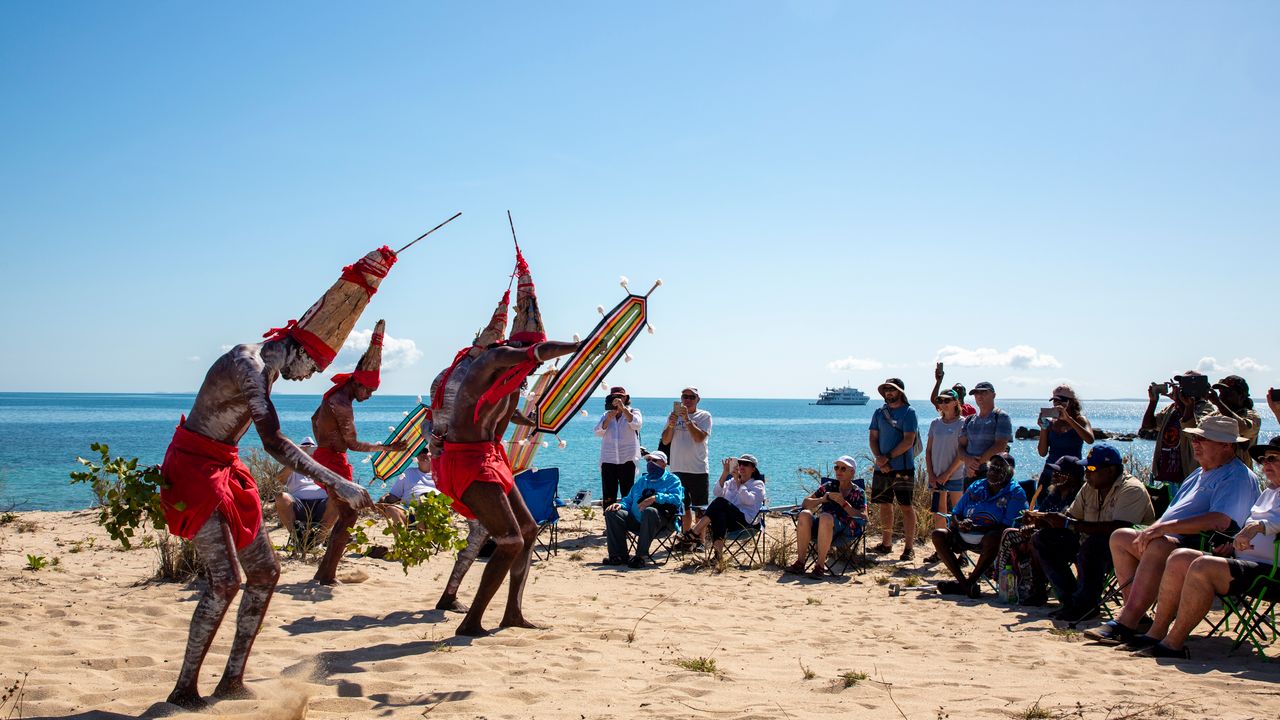
Natural icons of the marine park
Horizontal Falls
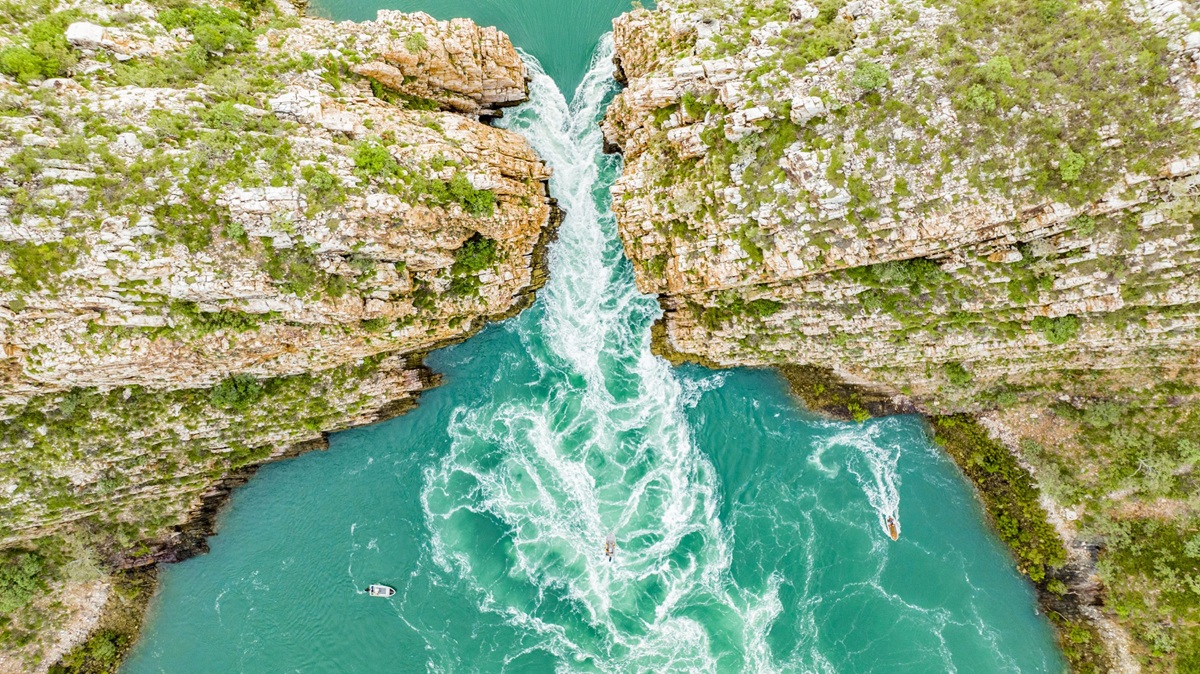
Often described by David Attenborough as one of the world’s greatest natural wonders, Horizontal Falls is one of the Kimberley’s most famous sights.
This incredible phenomenon is created by massive tidal movements, where huge volumes of water surge through two narrow gaps in the coastline, forming a waterfall effect that flows sideways. The Kimberley experiences some of the largest tides in the world, with differences of up to 10 metres, making this an ever-changing spectacle.
King George Falls
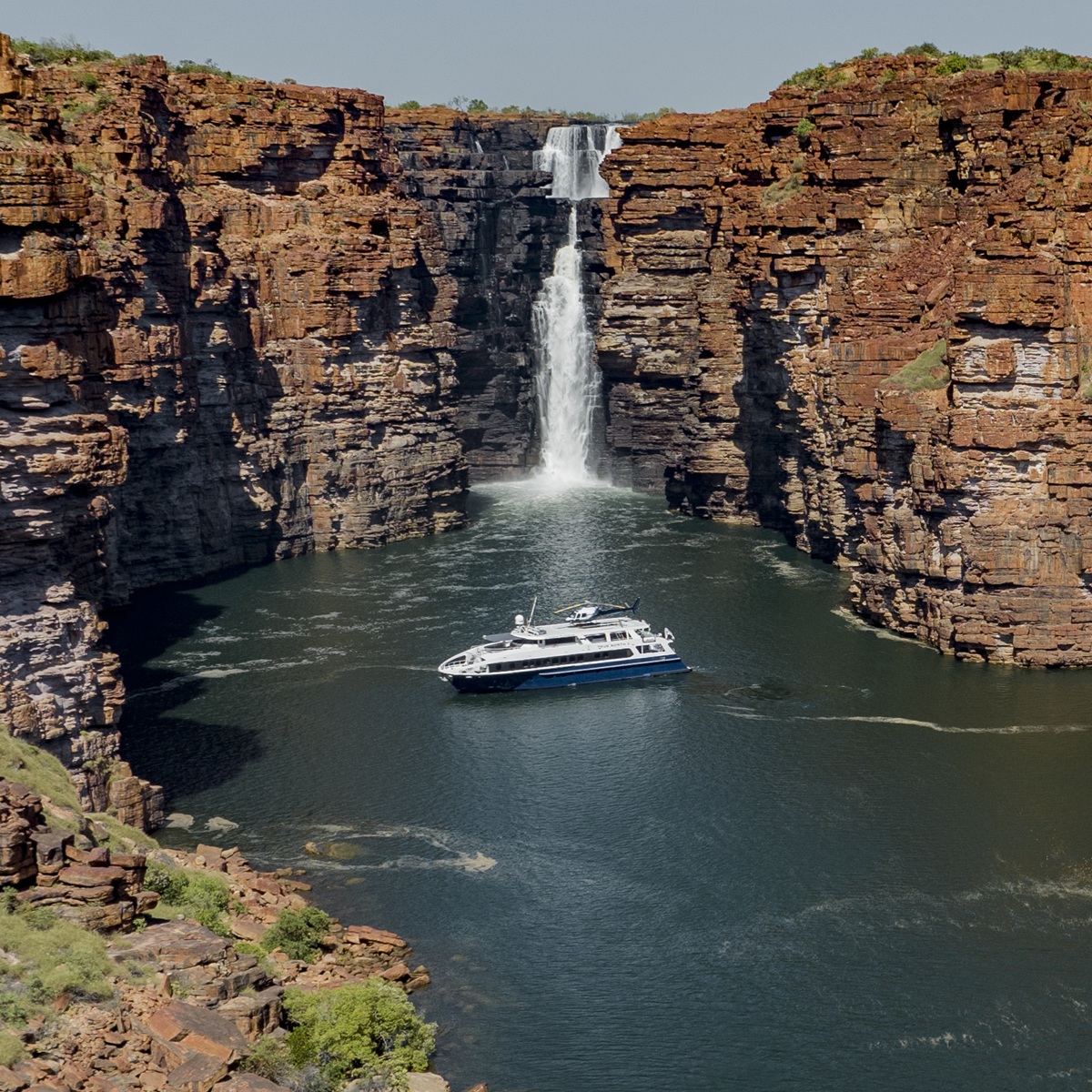
One of the most awe-inspiring waterfalls in the Kimberley, King George Falls plunges 100 metres straight into the sea, making it one of Western Australia’s tallest waterfalls. This twin waterfall is at its most dramatic after the wet season (March–May), when the water thunders down the red sandstone cliffs into the river below.
The falls are accessible only by boat or helicopter, adding to their remote and untouched beauty. As you cruise through the towering King George River Gorge, the scale of the landscape becomes even more impressive, with steep rock walls rising hundreds of metres on either side.
Montgomery Reef
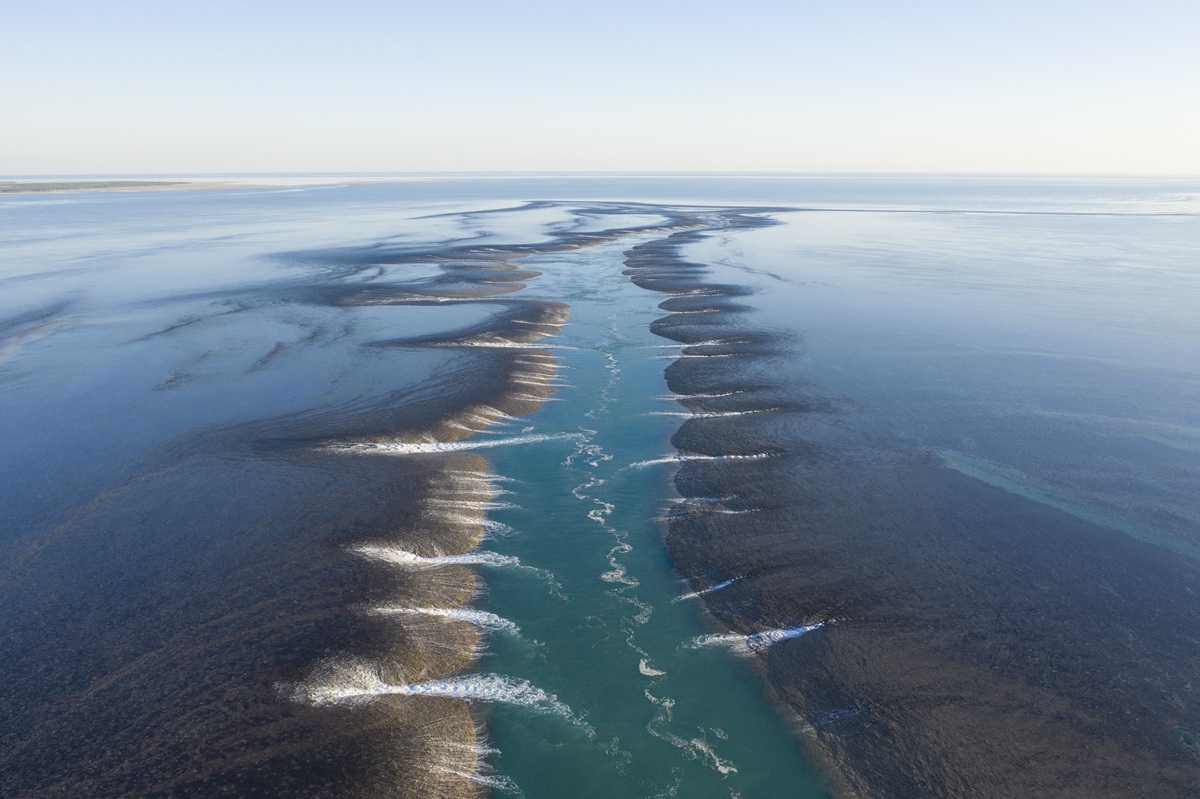
Few places in the world change as dramatically with the tide as Montgomery Reef. Covering 400 square kilometres, this massive reef appears to rise from the ocean as the tide drops, revealing a network of cascading waterfalls and exposed coral formations. As the water recedes, turtles, reef sharks, and rays become trapped in the shallow pools, creating a feeding frenzy for seabirds and marine predators.
The Buccaneer Archipelago
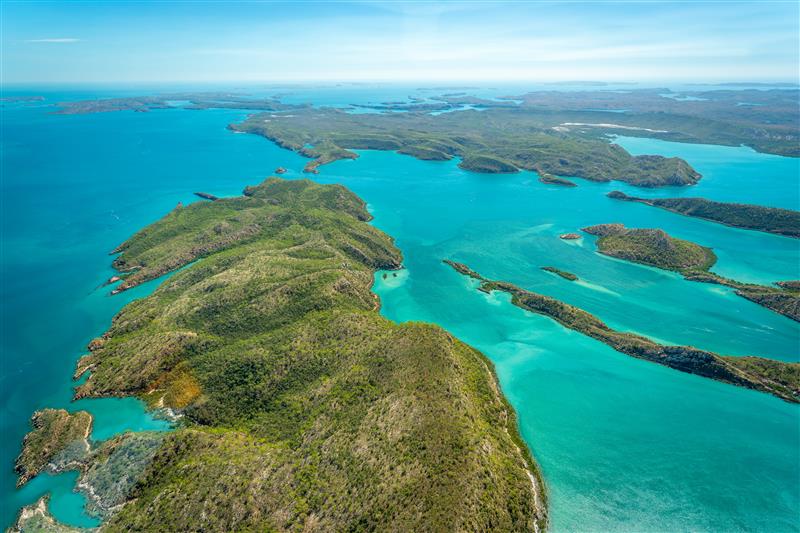
Scattered across the marine park, the Buccaneer Archipelago is a vast collection of over 1,000 rugged islands, many of which remain completely untouched.
These islands were formed over two billion years ago and are dotted with coral-fringed bays, hidden coves, and towering sandstone formations. Due to its remoteness, the archipelago is rarely visited, making it one of the most pristine and secluded cruising destinations in Australia.
How to explore the marine park
Helicopter: See it all from the sky
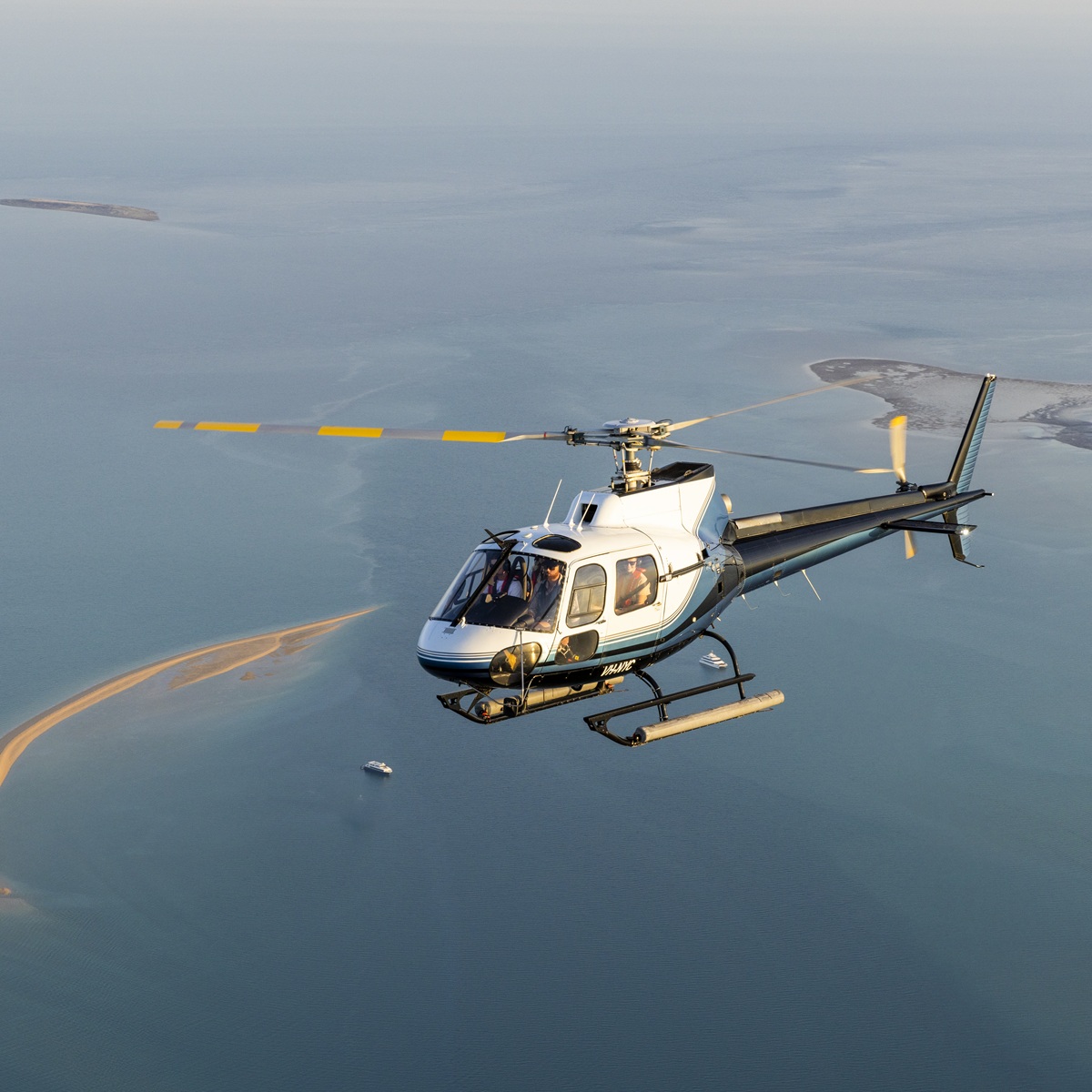
A helicopter flight gives you a spectacular view of the Kimberley’s vast landscapes. Fly over thundering waterfalls, remote islands, and endless stretches of reef, taking in the scale of this untouched wilderness.
Land beside hidden rock pools for a private swim or hover over Montgomery Reef as the water drains away, revealing marine life below. A helicopter isn’t the way to explore the Kimberley—it’s a way to add another layer to the experience.
Luxury cruise: Do it in style
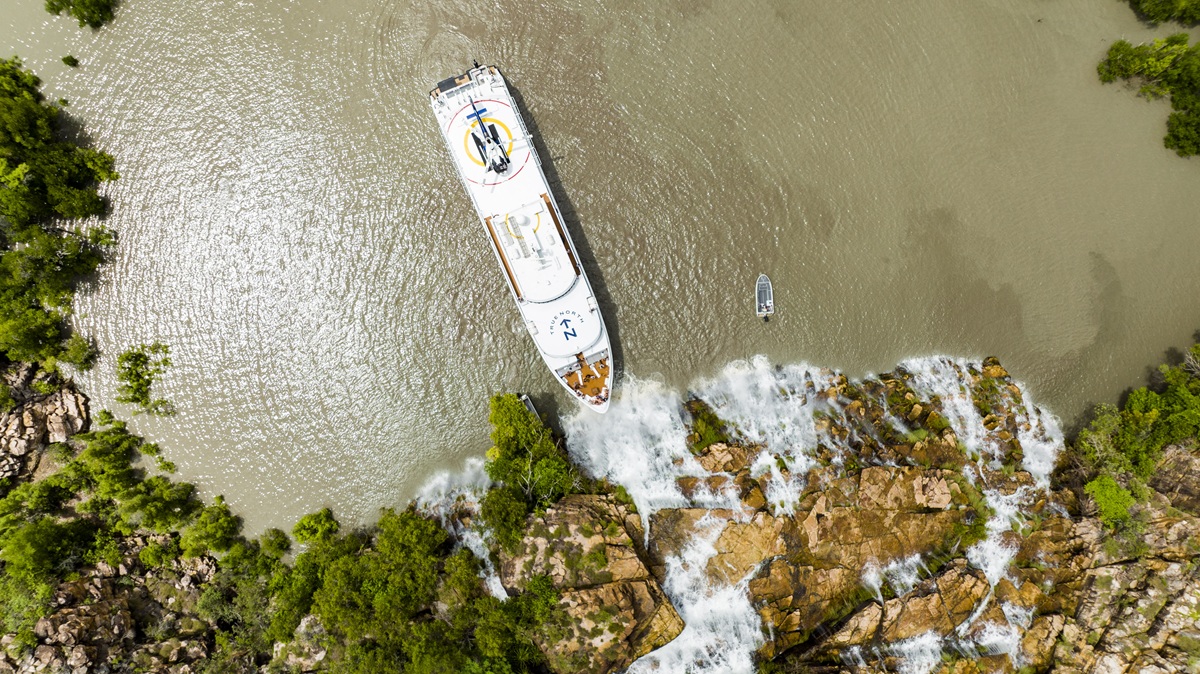
A luxury Kimberley cruise is the best way to experience the Great Kimberley Marine Park. Cruise through towering gorges, past remote islands, and alongside waterfalls that plunge straight into the ocean. With no roads or crowds, it’s just you, the open water, and some of the most untouched landscapes in Australia.
On board, enjoy freshly prepared meals by an expert chef, featuring the best local ingredients, from freshly caught seafood to native bush spices. After a day of exploring, relax with incredible ocean views, a drink in hand, and the sounds of nature all around you. This is adventure without compromise—immersing yourself in the wild beauty of the Kimberley while enjoying world-class comfort.
Don’t just dream it—Experience it for yourself
From towering waterfalls and ancient reefs to rare wildlife and endless ocean horizons, this is a place that few get to experience.
The best way to see it all? A luxury Kimberley cruise, where you can take in the region’s incredible landscapes without sacrificing comfort.
With each season offering something unique—from powerful waterfalls after the wet season to humpback whales on their annual migration—now is the perfect time to start planning. Explore our cruise dates and find the perfect time for your next Kimberley adventure.
